What do Renaissance Faires and Thanksgiving have in common? Well, both are occasions when you’re likely to see people chowing down on turkey legs. That makes sense in the latter case—turkeys are widespread in North America, they’re delicious when served with gravy and a healthy dollop of starch, and Benjamin Franklin even proposed, tongue-in-cheek, making them the national bird of the U.S. They make a good centrepiece for an American secular harvest festival—but why do they show up in recreations of pre-modern Europe?
Part of that is likely down to convenience: a fried turkey leg is a highly portable meal for someone strolling around a fairground. It mostly comes down to bang-for-the-buck, though. Turkey legs are relatively cheap bits of meat, especially in comparison to more authentic offerings. Medieval nobility indulged in birds like pheasants, peacocks, even swans—pretty difficult to get hold of nowadays, expensive, and a lot less palatable to modern sensibilities.
Gnawing away at a turkey leg is also a fun way of engaging with a particular kind of neo-medieval fantasy, and fulfilling modern ideas of the Middle Ages as one long bout of carnivorism, mead quaffing, and tankard throwing.
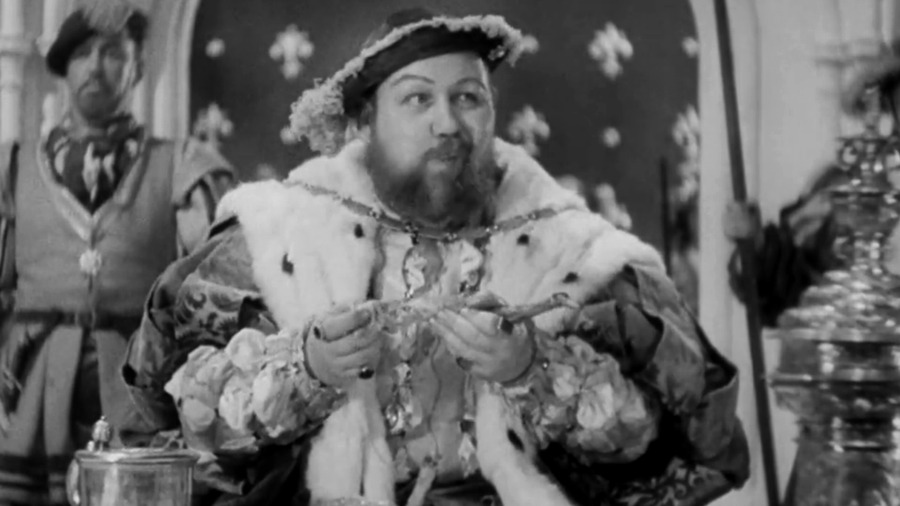
Yet no matter how much American fast-food chains like Arby’s try to get “in on the medieval-themed action” by selling smoked turkey legs, during the Middle Ages nobody in Europe was dining on turkey. In fact, they didn’t even know it existed. The bird is indigenous to the Americas, and was first sold in England in perhaps the 1520s, brought across the Atlantic by a Yorkshire trader. So it’s possible that Henry VIII may have eaten turkey, but it was hardly the most popular meat consumed in Tudor England.
For the most part, putting turkeys on the menu for a quasi-medieval feast is a fairly harmless kind of anachronism: vaguely irritating to medieval historians, sure, but no more so than most of the menu offered at dinner theatre venue, Medieval Times (which uses tomato soup, buttered sweet corn and coffee to bring eleventh-century Spain “to life before your eyes.” Authenticity isn’t exactly high on the owners’ agenda.)
But there is another way in which turkeys have been associated with the medieval past, and it’s a little more insidious than fast food chains selling dubiously historical food.
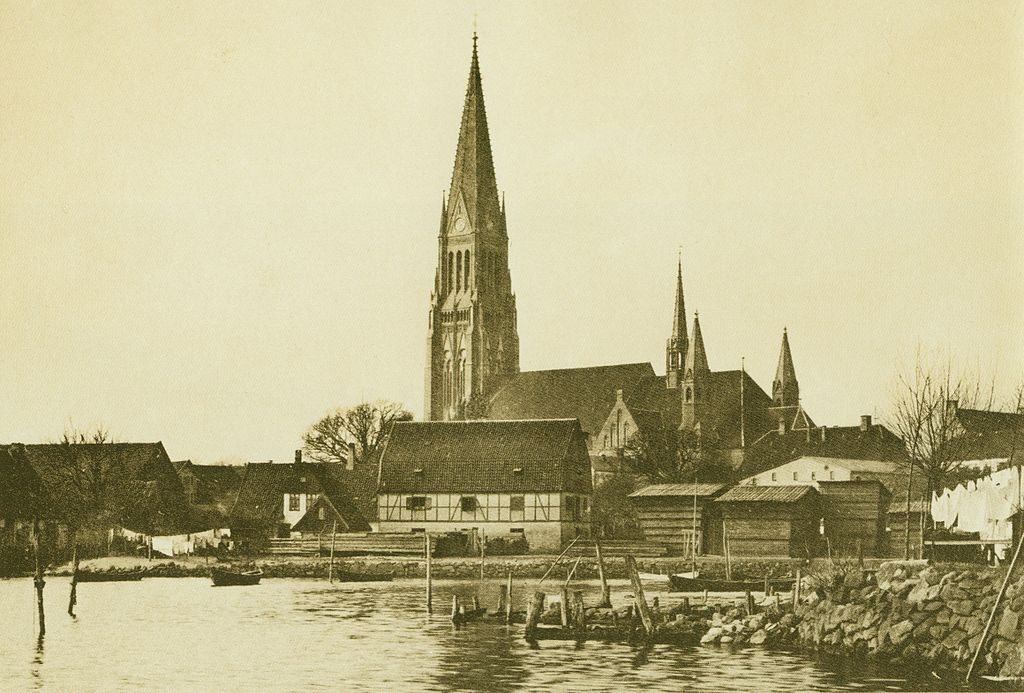
In the late 1930s, when Nazi Germany was at the height of its powers, father and son art historians Ernst and Dietrich Fey, together with painter Lothar Malskat, arrived in the northern German town of Schleswig. They’d been tasked with restoring the renowned medieval artwork which adorned the walls of the town’s Romanesque cathedral cloister. Dating to around 1300, this fine series of paintings depicted biblical scenes, but they had been badly damaged by damp over the centuries.
An attempt had been made to restore the paintings once before, by artist August Olbers in 1888. His efforts were of a piece with how many ninteenth-century experts approached conservation—if something was very badly damaged, then imagine what might have originally been there and create that in order to give the viewer a sense of what the Middle Ages had been like. By the 1930s, Olbers’ approach was out of fashion, but when the Feys and Malskat attempted to remove his work, they inadvertently also scraped away most of the original, priceless medieval paintings. Aware that he was legally on the hook for this, the elder Fey got Malskat to secretly produce a new set of murals to replace those that were destroyed. Malskat proved to be skilled at imitating the artistic styles of the later Middle Ages, even though he drew on family members and movie stars to provide the faces of Christ, the Virgin Mary, and the saints.
When the “restored” wall paintings were unveiled, they immediately attracted the praise of the Nazi elite, who interpreted them as supporting their strain of racialised nationalism. Here were some fine Germanic works of art, which depicted figures conforming to “Aryan” stereotypes. In 1940, SS leader Heinrich Himmler even ordered that a book on the cathedral and its paintings be distributed to every school in Germany.
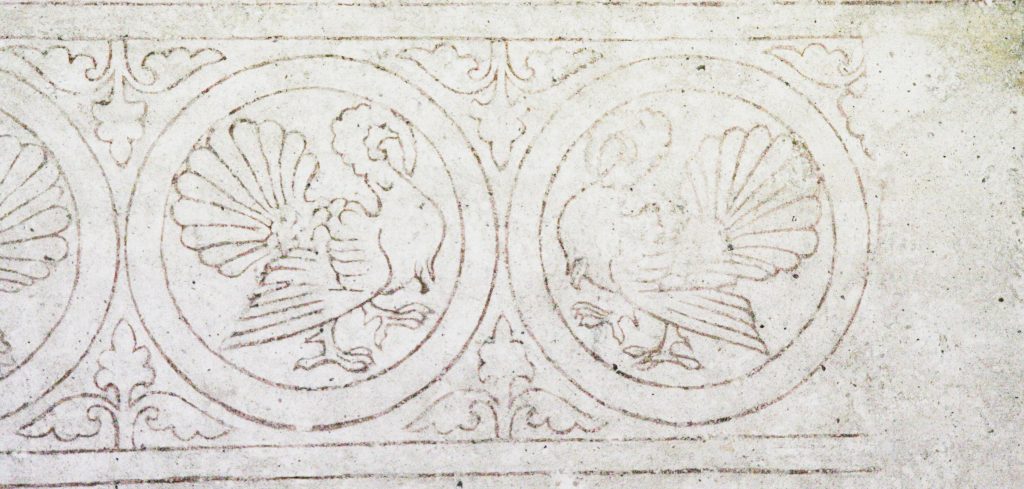
Now here’s the thing. While Malskat’s work might have been good enough on a technical level to fool those who weren’t experts in art history, you’d think that pretty much anyone who looked at these now very famous paintings would pick up on the fact that, trooping along the bottom of a depiction of the Massacre of the Innocents were no fewer than eight turkeys. Their presence in a medieval European painting could be most charitably described as “surprising”; “downright suspicious” might be a better term.
But such was the force of Nazi ideology that the turkeys were not seen as proof of artistic malfeasance, but rather that “Aryan” explorers had found the Americas long before Columbus and brought turkeys back to the Fatherland. (Far from the only time that Viking voyages to the Americas were used to justify white supremacist ideologies.) The elderly August Olbers emerged from retirement to explain that he had added the turkeys, not expecting that anyone would think them truly medieval. He’d just wanted to fill a small bit of empty wall space with a fox and turkey motif that would metaphorically echo the tale of the murderous King Herod shown above. Malskat, not exactly a skilled ornithologist, had thought they were truly medieval and expanded on Olbers’ out-of-place turkeys. Olbers’ explanation was greeted with cries of “Fake news!”, Nazis on the whole being less than keen on things like evidence.
It was only after the war—particularly once Dietrich Fey and Lothar Malskat were convicted of forgery following another fraudulent “restoration” job, this time on the Marienkirche at Lübeck—that people came to realise that the turkey paintings were not actually evidence that Vikings had ever sat down to a Ren-Faire-style feast.
They were just proof that, medieval or not, there’s more than one way to be a turkey.
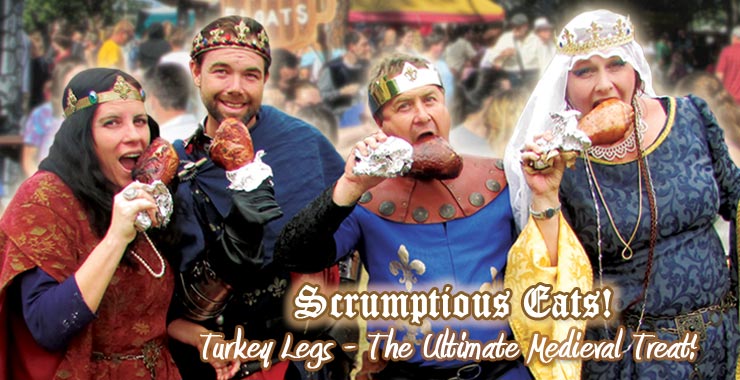
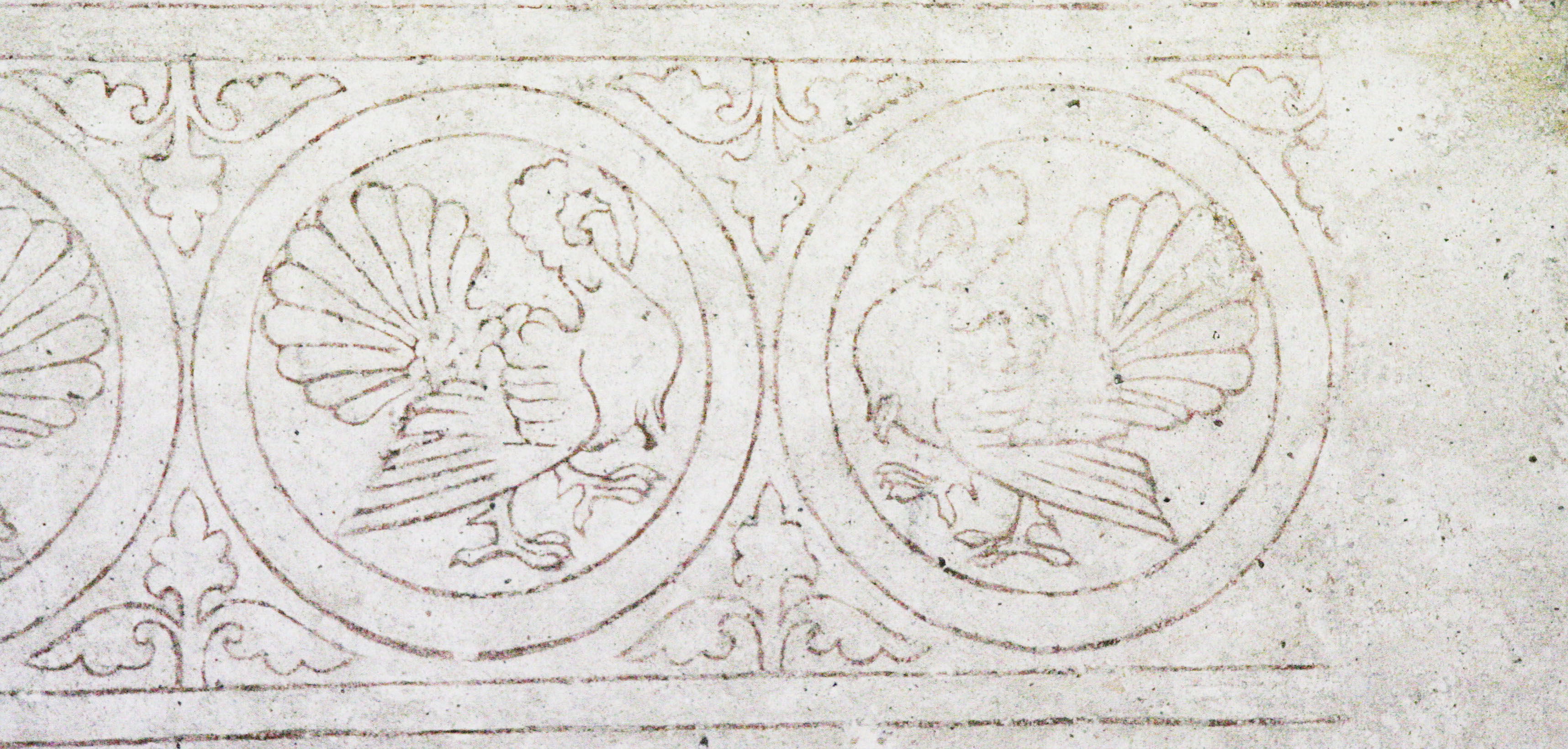
I lived in Sarasota, and have been to this fair, my husband has also acted in it for many years, and they try hard to be authentic. Turkey legs are likely substituted for the authentic goose leg, for two main reasons. The first being the cost. Goose is expensive in America. The second being the American palate. Goose is more gamey and not preferred here. Take it for what it truly is, the stand in for goose, which was very common and well liked in the middle ages.